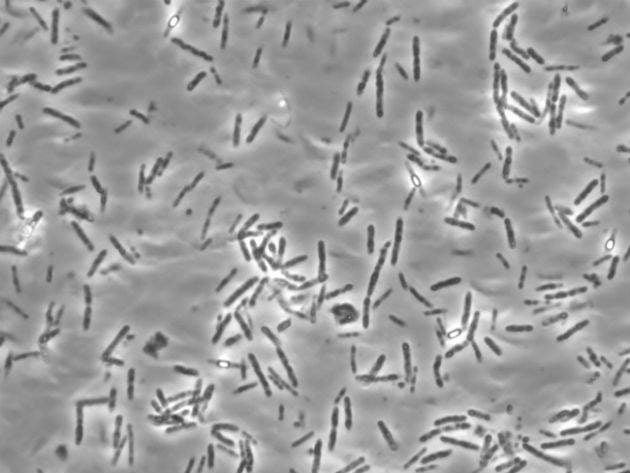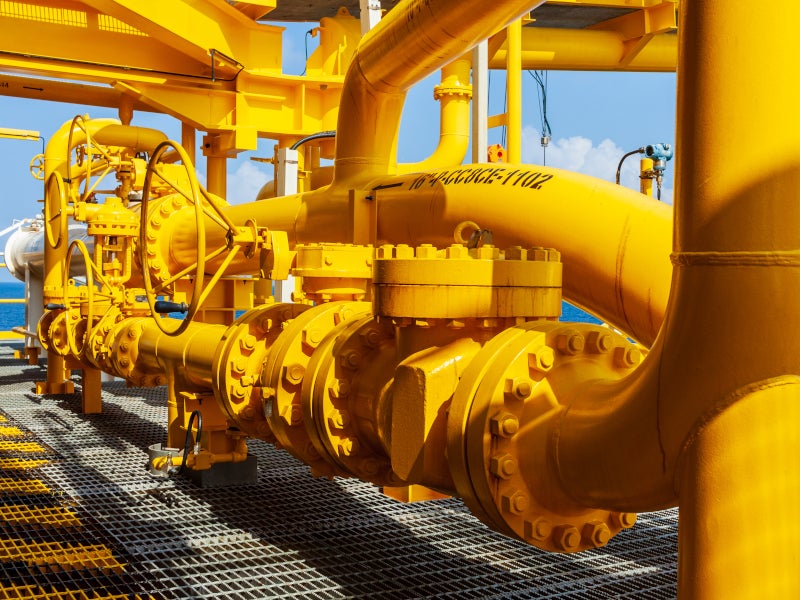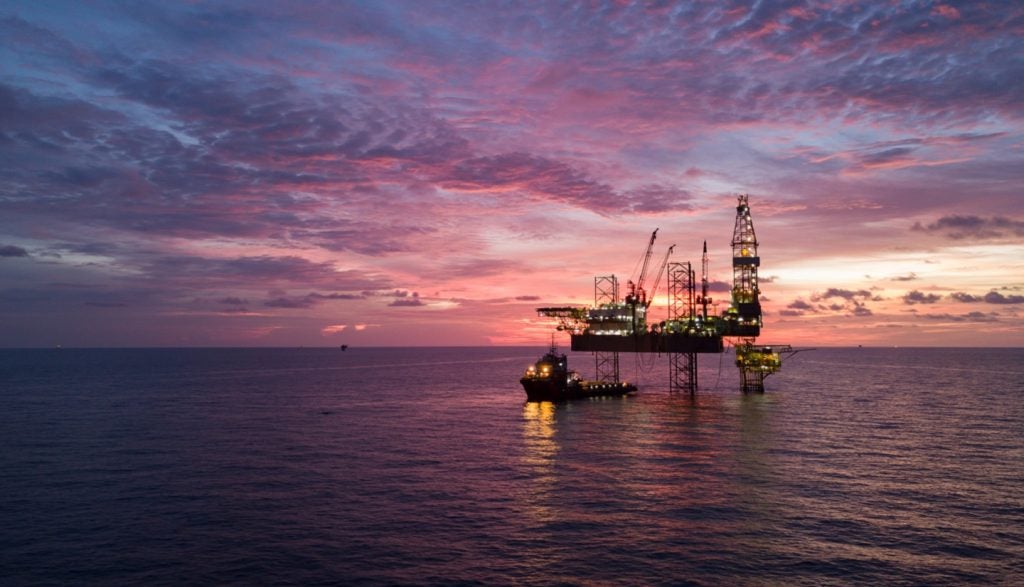
In the seabed certain bacteria can indicate the presence of hydrocarbons, a phenomenon that has sparked a race by some, including the US and Canadian governments, to develop a ‘test’ using these bacteria to help identify the presence and quantity of oil and gas.
Leading the drive in Canada, is research conducted by Casey Hubert at the University of Calgary. Hubert’s research was recently awarded $1.59m from Genome Canada, a not-for-profit organization funded by the Government of Canada, in addition to $3.31m from the Nova Scotia Department of Energy, and other funders.
The study plans to produce microbiological tests, or ‘screening assays’, that measure the distributions of different groups of bacteria that have the potential to indicate the presence and proximity of seabed hydrocarbon seeps.
According to Hubert, this approach is also helping to attract new investment to Nova Scotia, like recent leases totalling $2bn for new exploration.
See Also:
Heidi Vella: What types of bacteria will you be looking at during the study and why?
Research leader Casey Hubert: We are interested in three groups of bacteria. Firstly, bacteria that eat hydrocarbons and breathe with oxygen. These bacteria become enriched in seabed hydrocarbon seep environments at the sediment-water interface where oxygenated water comes into contact with the hydrocarbons coming up through the sediment.
How well do you really know your competitors?
Access the most comprehensive Company Profiles on the market, powered by GlobalData. Save hours of research. Gain competitive edge.

Thank you!
Your download email will arrive shortly
Not ready to buy yet? Download a free sample
We are confident about the unique quality of our Company Profiles. However, we want you to make the most beneficial decision for your business, so we offer a free sample that you can download by submitting the below form
By GlobalDataSecondly, bacteria that eat hydrocarbons but breathe with alternative electron acceptors like sulphate. As these “anaerobic bacteria” do not use oxygen, they are typically found a little bit deeper in the sediment where there is no longer any oxygen.
Thirdly, we are interested in a group of bacteria that can only grow at high temperatures – “thermophiles”.
We know the cold ocean contains thermophiles, but it remains enigmatic why they are there. A promising explanation is the physical advection of hydrocarbon fluids from deep-seated hydrocarbon reservoirs.
By mapping these different groups in marine samples, the project will additional layers of information for oil and gas prospecting. Given how expensive offshore drilling is, especially in deeper water where it can reach hundreds of millions of dollars per drilled well, it is important to have as much reconnaissance as possible.
HV: Working that deep in the Atlantic Ocean can’t be easy, what challenges do you expect to face?
CH: Obtaining samples from challenging environments. Detecting the target bacteria and developing assays that can be rapidly deployed for their mapping and measurement. Working across disciplines with geoscientists to integrate microbiology with geochemistry, geophysics and other tools to create a composite de-risking for a site of interest.
Microbiology is not always routine in the oil and gas sector, so depending on the audience, there may be some explanations for us to provide about bacteria and their usefulness in this context.
HV: And why should the industry take note of this new research?
CH: Totally new ways to map the seabed that are mutually exclusive of existing tools, therefore adding additional layers of information for de-risking and answering questions that have lots of money and environmental impact riding on the answers, is a key advantage.
Beyond just thinking about exploration, we are creating biological data that can serve as a baseline description of a given marine environment at a very early stage in the oil exploration and production process.
Consider the 2010 deepwater horizon oil spill example; when that reservoir was first discovered, had there been microbiological assays as part of the exploration, baseline environmental data would have been generated.
Fast forward to the disaster and spill that occurred in 2010. It would have been extremely useful for government, scientists, environmentalists, and BP, to know what the pre-existing baseline state of that environment was.
Scientists working on that spill have lamented that better baseline data was not available. This is therefore a key advantage to using microbial genomics in exploration, it will by default produce baseline data that may be useful in the future. After all, the most likely locations for marine oil spills will be the platforms where the oil is being produced.
HV: Can it directly save offshore operators money?
CH: If microbiological assays can help companies avoid drilling a dry hole – a hole with no oil – then based on the cost per hole, there are millions to billions in cost savings.
HV: How can genomic research help combat issues such as souring of production, or hydrogen sulphide production?
CH: Hydrogen sulphide is produced by bacteria in oil fields, therefore genomics research is invaluable to understanding that process and the sulphate reducing bacteria that are responsible.
Genomics is also extremely valuable for understanding and monitoring souring mitigation strategies that involve other groups of bacteria. Companies sometimes combat souring by injecting nitrate into the reservoirs to create an ecological dynamic whereby the ‘nitrate reducing bacteria’ and their activity can act to overcome the build-up of hydrogen sulphide.
HV: Is there motivation in the offshore oil industry to fund genomic research?
CH: It really depends on the research topic, different oil companies are very interested in different topics at different times.
Most oil companies are interested in all of the research topics, but do not necessarily always have funding or grants for university microbiologists. We have received some funding from oil companies over the past few years, mostly for souring control and corrosion, but this represents only about 10% of our total research budget, with 90% coming from government grants, including from the UK, EU, and more recently, the governments of Alberta and Canada.
HV: Oil critics might argue that directing research money to carbon free sources of energy would preferable, what do you say to this?
CH: I am very much in favour of research funding being prioritised towards improving our capacity to develop and use renewable energy resources. I am also in favour of societies transitioning away from fossil fuel energy sources as soon as possible. But this transition might still require decades. In the meantime we hope that exciting research in marine microbiology and the microbial ecology of the ‘deep biosphere’ can help stand in the gap through these kinds of applications.
In the case of our specific Genome Canada project, the government of Nova Scotia is trying to develop its offshore energy resources and attract oil industry investment to the province and the region. For example, by prioritising geoscientific mapping of certain offshore areas in the 2000s, the Nova Scotia Department of Energy was able to attract bids for exploration leases from two large oil companies each for $1 billion each, meaning $2bn in spending commitments that will bring benefits to Nova Scotians. And this is just for exploration rights, before any oil is discovered.
The people of Nova Scotia can decide how to reinvest this money. Maybe they want to develop the tidal energy potential in the Bay of Fundy which has the highest tides in the world.





